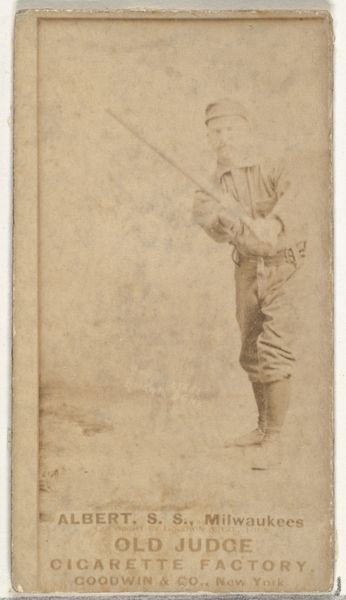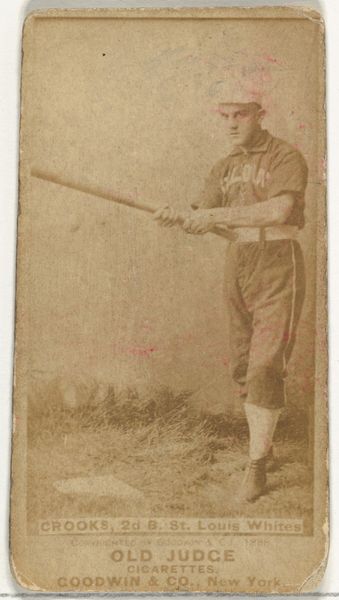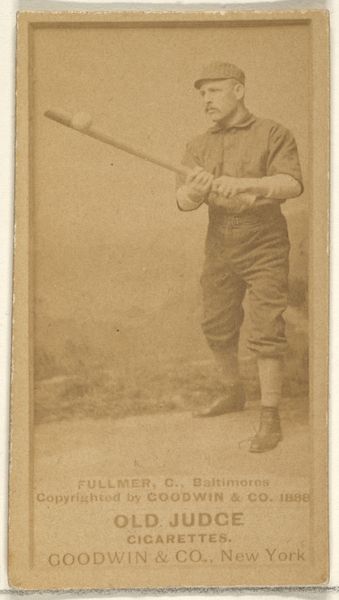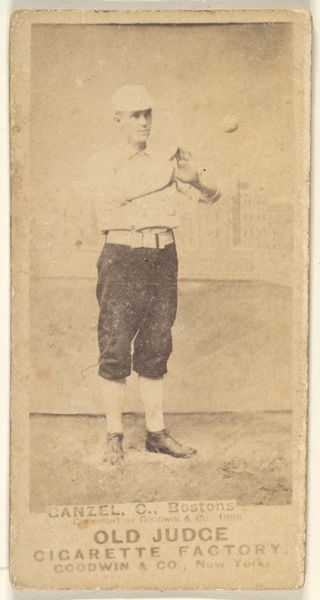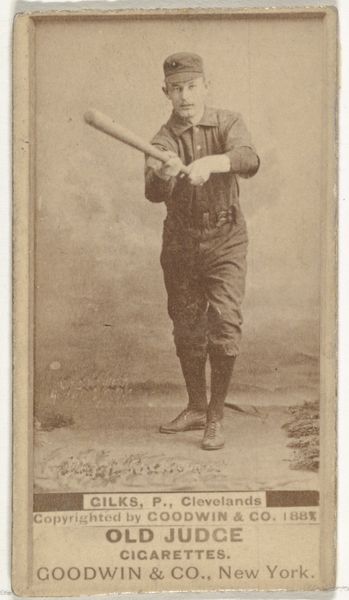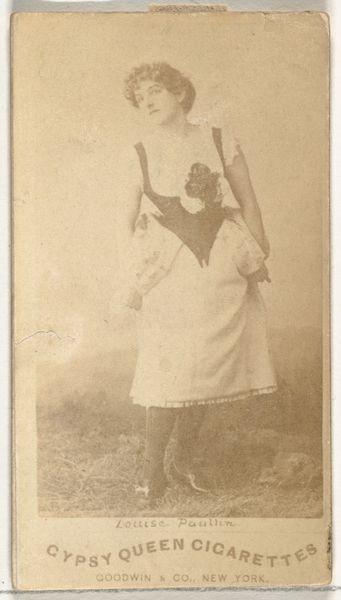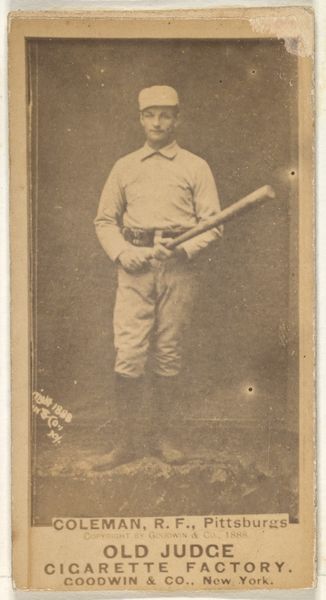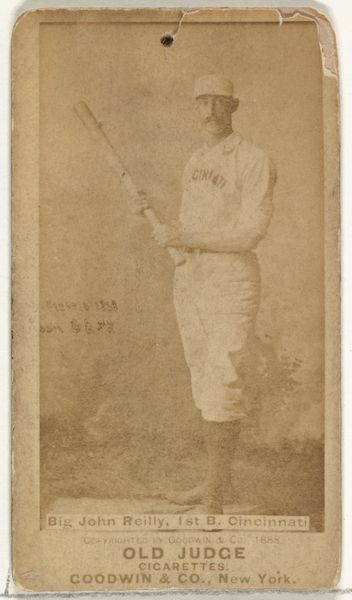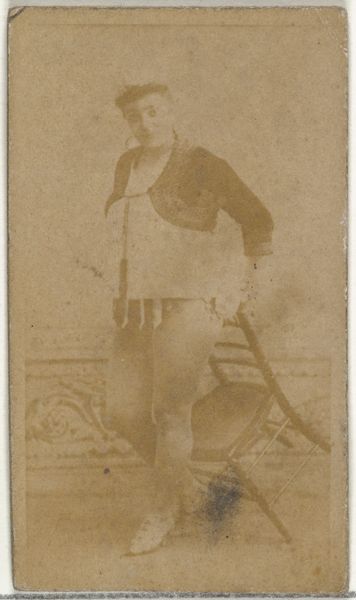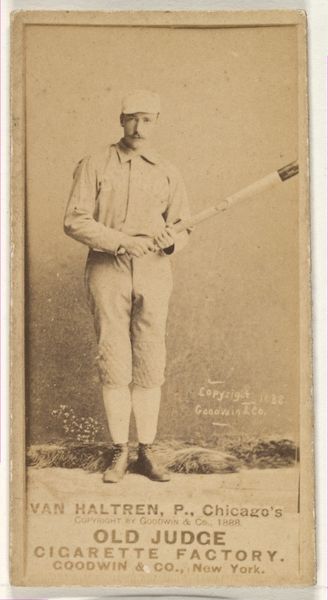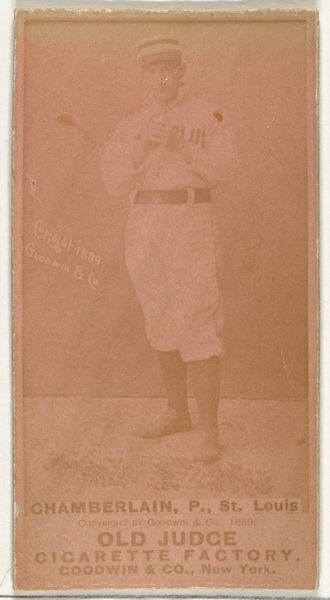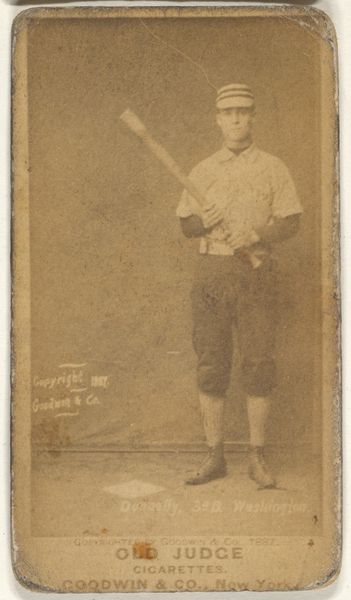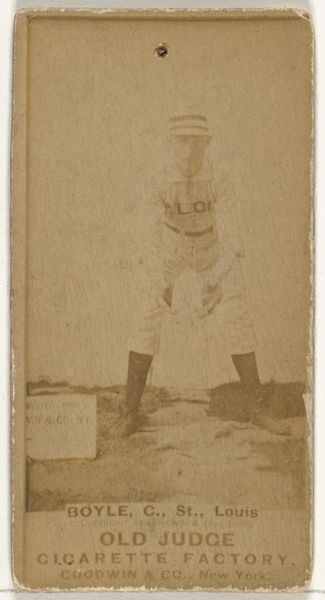
Burdock, 2nd Base, Boston, from the Old Judge series (N172) for Old Judge Cigarettes 1887
0:00
0:00
drawing, coloured-pencil, print, photography, albumen-print
#
portrait
#
drawing
#
coloured-pencil
# print
#
baseball
#
photography
#
coloured pencil
#
genre-painting
#
history-painting
#
albumen-print
Dimensions: sheet: 2 11/16 x 1 3/8 in. (6.9 x 3.5 cm)
Copyright: Public Domain
Editor: Here we have an albumen print from 1887, "Burdock, 2nd Base, Boston," part of the Old Judge Cigarettes series by Goodwin & Company. It’s essentially a baseball card. The sepia tone gives it this lovely antiquated feel, and you can really see the marks of time. What strikes you about this image? Curator: What grabs me immediately is the intertwined relationship between commerce, leisure, and labor so explicitly on display. It's not just a baseball player; it’s a commodity being used to sell another commodity: cigarettes. The means of production are completely visible: it's a photographic print, mass-produced for consumption. What does this intersection of sport and sales tell us about the late 19th century? Editor: That's fascinating! So, it's not just a picture, it's a cog in a larger system of production and consumption. The image itself becomes labor, almost? Curator: Precisely! Think about the labor involved: the photographer, the printers churning these out, and even the baseball player who’s participating in the process. It also raises the question of how photography, still relatively new, was being utilized within industrial capitalism. Were these "art" or purely commercial objects? Editor: It seems to blur that line completely, doesn’t it? Were these considered disposable? The damage to this one suggests some were heavily used or handled often. Curator: I suspect their value shifted over time. Initially, perhaps considered promotional ephemera. Now, displayed in the Met, it has achieved status as both art and historical document. Even the cigarette brand itself adds another layer – consider tobacco’s history, the labor involved in its cultivation and distribution. Does understanding its context change your perspective? Editor: Absolutely. I went from seeing a vintage baseball card to recognizing a complex interplay of production, marketing, and social history, all tied to a simple image. It really emphasizes how interconnected things were, even back then. Curator: And reminds us how much meaning is embedded in the material objects we often overlook.
Comments
No comments
Be the first to comment and join the conversation on the ultimate creative platform.
